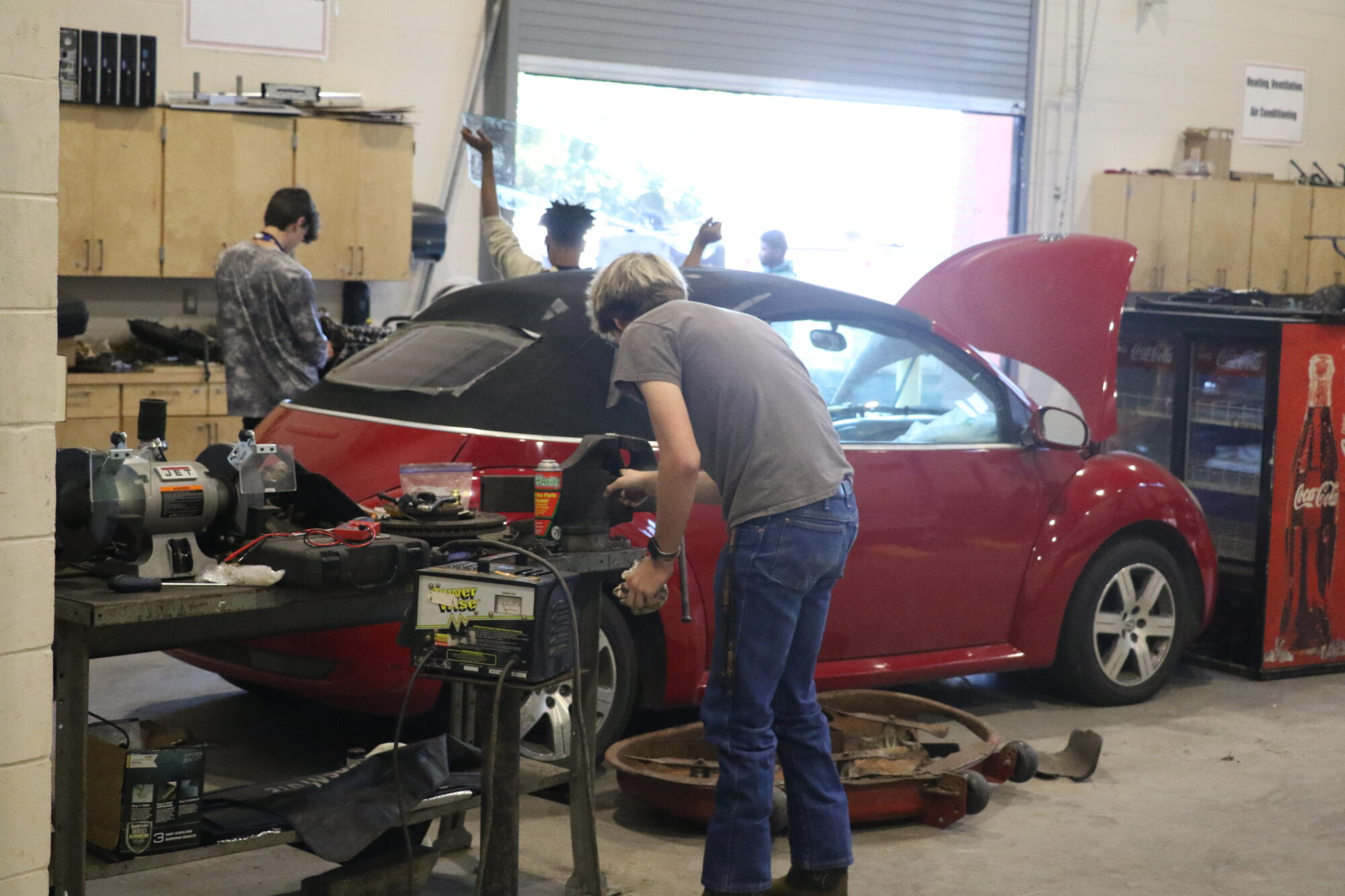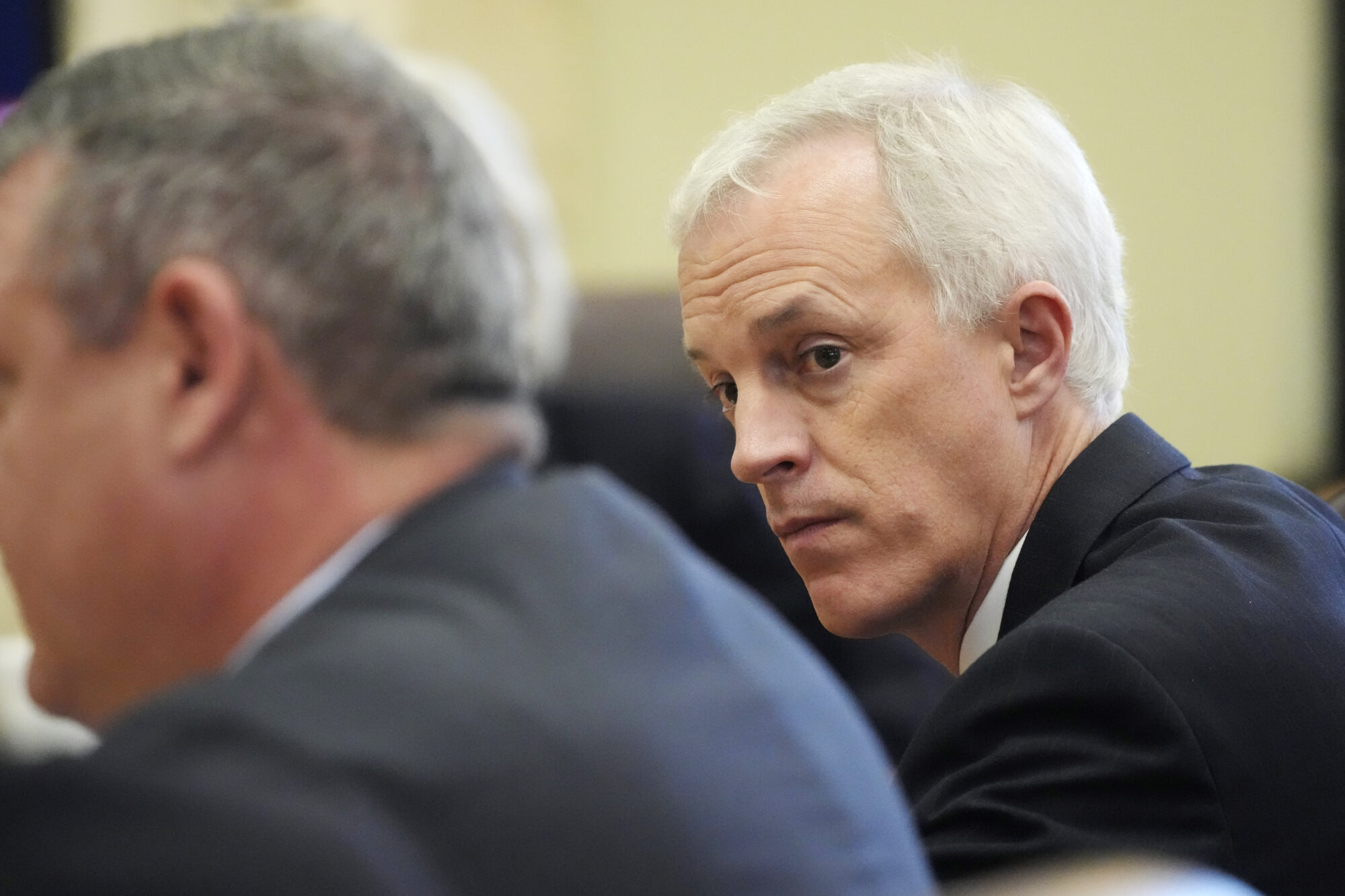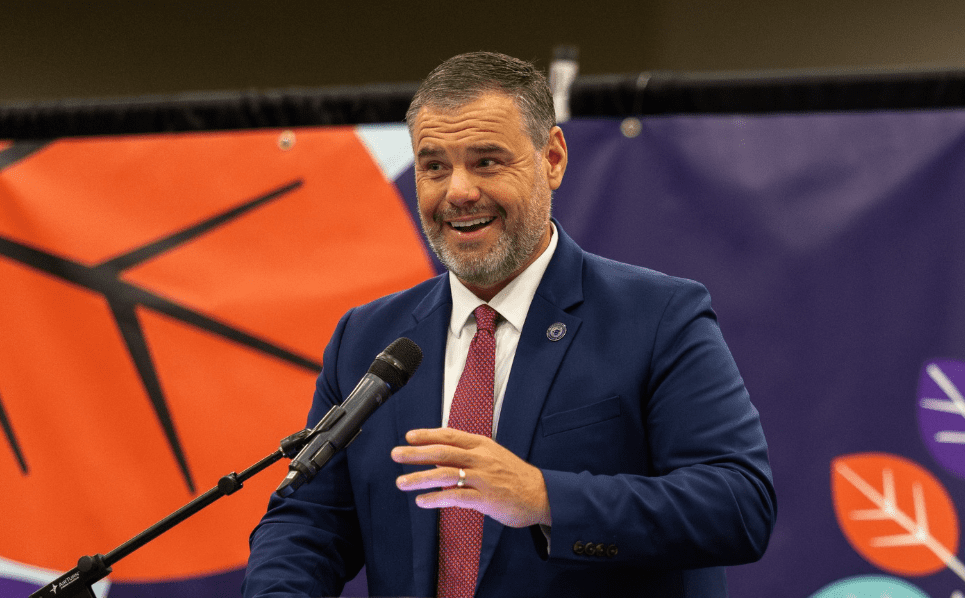
Gulfport High School offers an automotive repair class through its Career and Technical Education program. There, students learn how to maintain and repair automobiles while earning ASE certification. (Photo by Jeremy Pittari | Magnolia Tribune)
- MDE is developing a comprehensive workforce development program for K-12 students but there are hurdles.
As Mississippi works to address a low workforce participation rate, there is a need to expand the number of Career and Technical Education (CTE) centers in the state while ensuring that the courses offered align with each region’s employment needs.
During last week’s meeting of the Senate Labor Force Participation Study Group, representatives with the Mississippi Department of Education (MDE) spoke about how the department plans to help expand the state’s workforce.
As part of that effort, MDE created a new office, the Office of School and District Transformation, which will oversee the state’s school districts of transformation, school improvement, Career and Technical Education, and workforce development.
Chief of the Division John Ferrell informed the legislative study group that districts of transformation are those where the state had to step in to address issues. The goal of his office, he said, is to prevent that from happening in the future by identifying a struggling district’s needs and provide assistance before it gets to the point where the state must act.
“We don’t ever want to take over a school district in the state,” Ferrell said. “That’s our goal now and that is my approach here to our struggling schools. We want to get them on the right trajectory before (that’s necessary).”
On the CTE side, there is also an effort to embed an equitable workforce development system in the state’s education system utilizing partners in post-secondary education and industries while developing a statewide K-12 workforce participation plan.
Brett Robinson, Associate State Superintendent in the Office of Career, Technical and Workforce Development Education, said CTE programs across Mississippi currently offer 48 skill or pathway programs that represent 15 of the 16 national career clusters. He added that the national career cluster model was developed about 20 years ago.
Last year, 52,328 middle school students and 74,225 high school students enrolled in the state’s CTE programs in Mississippi. The classes are not only gaining popularity, but exam passing rates are increasing. Robinson said that for the 2022-2023 school year, about 4,400 students took CTE exams, of which 49 percent passed. The following school year, there was a notable uptick in enrollment and passing rates.
“One thing to note is that you almost tripled the number of students that were taking exams, and our overall passing percentage went up to 54 percent. So, a majority of our students are taking and passing these certifications.”
Some students are earning Automotive Service Excellence (ASE) certification through their CTE courses, allowing them to get a job at a certified automotive repair shop. A number of those students are also passing every module, allowing them to hold instructor level certification at 17- or 18-years-old.
“It’s important to kind of keep some of those things in mind, that we are talking about 15, 16, 17, 18-year-old kids who are sitting for these exams and overall doing a good job,” Robinson added.
Ferrell addressed one of the biggest needs of any program, funding, most of which comes from the state. Only about 15 percent of the funding for CTE programs comes from federal sources. Last year, Ferrell said his office spent $55.5 million on secondary education and Career and Technical Education. Of that total, Robinson said 95 percent was spent on personnel because school districts are reimbursed 49 percent of a high school CTE teacher’s salary and 40 percent of the salary for a similar teacher at middle schools.
While not every school district in Mississippi has its own CTE program, every school has access to a CTE program through memorandums of understanding with school districts that have a program. Robinson said the particulars of those MOUs, such as cost sharing and how transportation is handled, are worked out at the local level.
Ferrell said MDE also monitors a program’s enrollment numbers. When a program falls below 10 enrolled students, the district is informed to bring enrollment numbers up within a year or it will be cancelled. However, when a program has a teaching vacancy, the district can request a hold on the program until the position is filled. Ferrell told lawmakers that the process has led to some programs being on hold in a district’s CTE center for up to four years while administrators search for staff.
The financial burden of starting a new CTE program in Mississippi is extensive. Since federal funding for CTE programs is based on sustainability of the program, the initial cost to start a new program falls to the state. Those expenses include purchasing the necessary equipment and supplies, among other costs. The task of finding a person with the proper certification willing to work for a teacher’s salary is another hurdle at times.
MDE is working with the Mississippi Community College Board to ensure CTEs are meeting the needs of the state’s workforce while identifying areas that require more attention. The goal is to provide courses that provide the best labor force benefit to the students and the region. That may mean closing less beneficial programs in order to provide best benefit a particular region of the state.
CTE courses not only provide a skill that can be used to join the workforce, but also affect graduation rates. Robinson said the graduation rate for all students in the state was at 89.4 percent in 2023, but the graduation rate in that same year for CTE students who reached the fourth and last semester of a CTE course was 99.5 percent.
MDE is developing a comprehensive workforce development program for K-12 students, with an eye to promoting working in Mississippi from a young age. That might mean having elementary students share what their parents do for a living with the rest of the class, or middle school students developing a strategy to reach their career goals before entering high school, Ferrell described.
“It’s my belief that by the time a student is in the eighth grade, they ought to know whether they’re going north, east, south or west in their career path, that way they can get more specific and strategic in their high school career,” Ferrell described.











